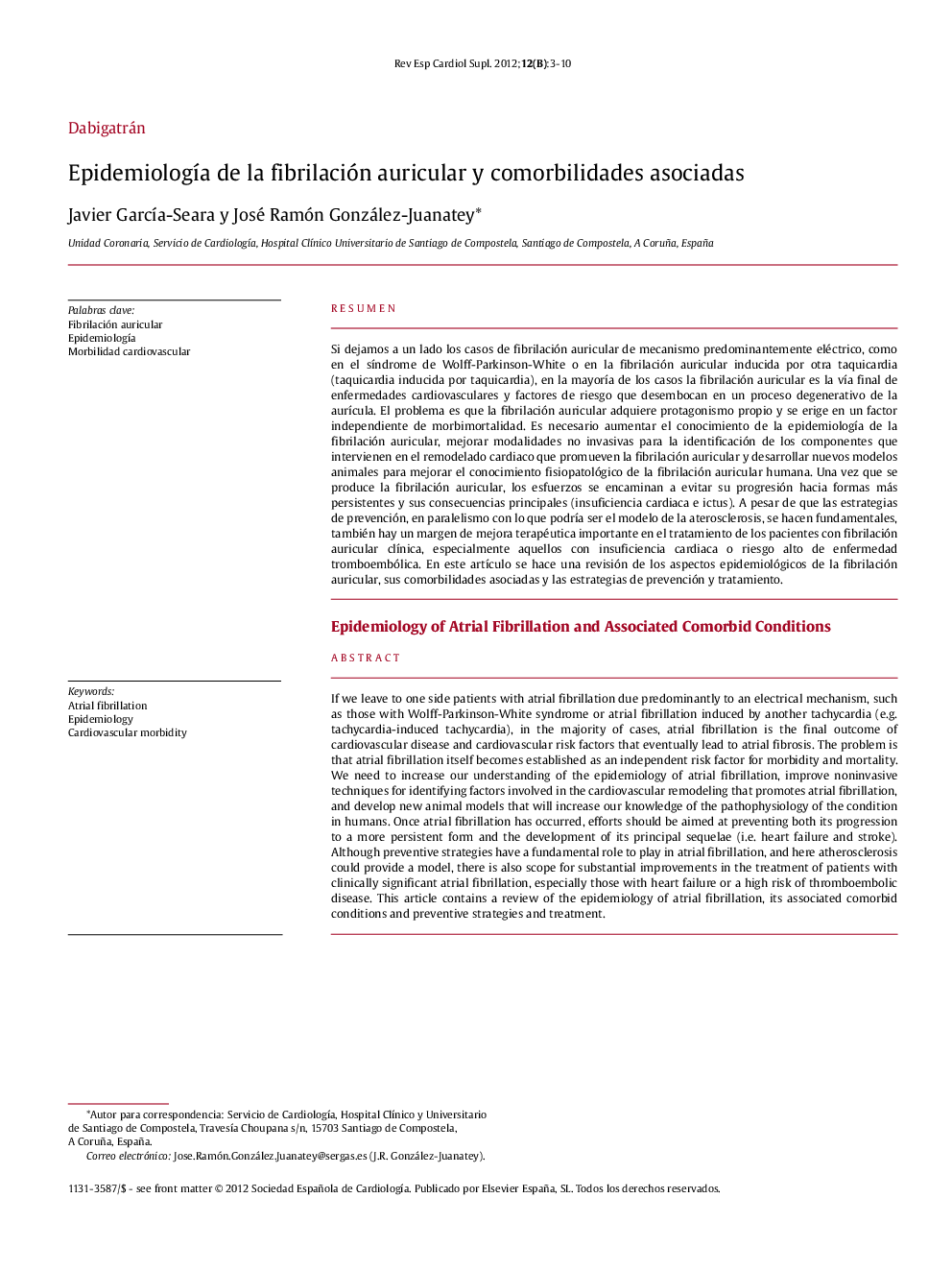| Article ID | Journal | Published Year | Pages | File Type |
|---|---|---|---|---|
| 3019379 | Revista Española de Cardiología Suplementos | 2012 | 8 Pages |
Abstract
If we leave to one side patients with atrial fibrillation due predominantly to an electrical mechanism, such as those with Wolff-Parkinson-White syndrome or atrial fibrillation induced by another tachycardia (e.g. tachycardia-induced tachycardia), in the majority of cases, atrial fibrillation is the final outcome of cardiovascular disease and cardiovascular risk factors that eventually lead to atrial fibrosis. The problem is that atrial fibrillation itself becomes established as an independent risk factor for morbidity and mortality. We need to increase our understanding of the epidemiology of atrial fibrillation, improve noninvasive techniques for identifying factors involved in the cardiovascular remodeling that promotes atrial fibrillation, and develop new animal models that will increase our knowledge of the pathophysiology of the condition in humans. Once atrial fibrillation has occurred, efforts should be aimed at preventing both its progression to a more persistent form and the development of its principal sequelae (i.e. heart failure and stroke). Although preventive strategies have a fundamental role to play in atrial fibrillation, and here atherosclerosis could provide a model, there is also scope for substantial improvements in the treatment of patients with clinically significant atrial fibrillation, especially those with heart failure or a high risk of thromboembolic disease. This article contains a review of the epidemiology of atrial fibrillation, its associated comorbid conditions and preventive strategies and treatment.
Keywords
Related Topics
Health Sciences
Medicine and Dentistry
Cardiology and Cardiovascular Medicine
Authors
Javier GarcÃa-Seara, José Ramón González-Juanatey,
